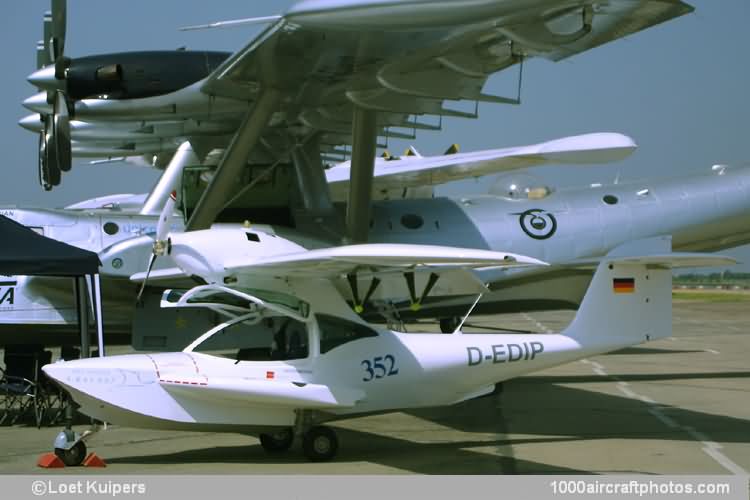Modern lightweight carbon and composite structure provide a comparatively high resistance against fatigue, assuring a well proportional payload and range, and terminate recent corrosion problems on aluminum structures. The partial free nose wheel reacts as a dampener on water collision in its retracted position. A water rudder assists to control and maneuvers the aircraft at slow speeds. The wing can be rotated 90°, parallel over the fuselage length axis, so the aircraft can be stored easily in confined spaces, and transported in a container or on a trailer.
The aircraft was registered as D-EDIP on July 7, 2007, and powered by a single 100 hp Rotax 912 four-cylinder liquid/air-cooled boxer-engine, the first flight was performed by former Dornier 328 test pilot Gerhard Thalhammer from Bodensee Airport, Friedrichshafen, on July 14. Only two days later it was air-freighted to Oshkosh, Wisconsin, USA, for display at the EAA AirVenture. Reportedly five aircraft have been produced to date."
Span: 29 ft 6.3 in (9.00 m)
Length: 22 ft 1.7 in (6.75 m)
Height: 6 ft 10.7 in (2.10 m)
Wing area: 129.2 sq.ft (12 sq.m)
Weight empty: 1,058 lb (480 kg)
Max T/O weight: 1,764 lb (800 kg)
Max speed: 143 mph (230 kmh)
Cruise speed: 115 mph (185 kmh)
Climb: to 741 ft (226 m)/min
Range: 808 mls (1,300 km)
Iren Dornier may have inherited one of the most famous surnames in aviation industry, but he is a highly-successful aviator and entrepreneur in his own right. He is a flight instructor and pilot imbued with a love of aviation, his projects include a new range of seaplanes, including the S-Ray 007.
He runs Philippines amphibious airline Seair, owns watches and fashion brands, and to raise awareness of UNICEF education projects, has since 2004 visited 90 countries in the sole turbo-propeller powered Dornier Do 24 TT, in front of which the S-Ray is seen parked in the photo on top of the page."
